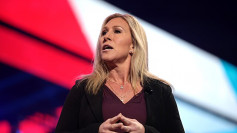Many Americans appear to be struggling to accept this new reality, as the national average for a gallon of gas remains much above $4. Changes in consumer behavior are a part of that.
According to AAA, gas demand is "defying seasonal trends" and is declining, possibly as a result of increasing fuel prices.
"Usually this time of year, with warmer weather and longer days, we'd see an uptick in gasoline demand as more people hit the road," said AAA spokesman Andrew Gross in a press release. "But we had a slight drop in demand last week, which may be due to higher pump prices."
According to AAA's survey, 59% of respondents stated they would change their driving habits or lifestyle if petrol prices reached $4 per gallon. And if petrol reached $5, as it has in the Western half of the country, three-quarters said they would have to change their lifestyle to compensate for the higher price at the pump.
There are also some significant disparities between age groups. According to the report, persons aged 18 to 34 are nearly three times more likely than those aged 35 and up to contemplate carpooling. Moreover, those aged 35 and over are more likely to favor combining trips and errands (68% vs. 52%) and reducing shopping or dining out (53% vs. 43%).
Tamar Essner, principal of Vectis Energy Partners, recently told Yahoo Finance Live that high gas prices may be causing demand destruction right now.
"We're seeing that consumers are having real sticker shock," he said. "And the question is: Does the sticker shock translate into actual demand destruction? And we think in certain parts of the economy that's already happening. In certain parts of the world, that already is."
Lipow Oil Associates president Andrew Lipow, however, told Yahoo! that "gasoline prices have to rise to roughly $4.75 to $5.00 a gallon in order to have a significant amount of demand destruction."
The discomfort at the pump isn't going away anytime soon. Patrick De Haan, GasBuddy's head of petroleum analysis, recently stated that "it's a dire situation that won't improve any time soon."
According to CBS News, the annual cost of this crisis to a typical household budget is around $2,000 each year. This is in addition to an estimated $1,000 increase in grocery expenses owing to inflation, implying that the average household would have $3,000 less to spend on other products this year, it said.






